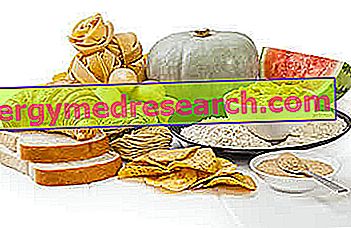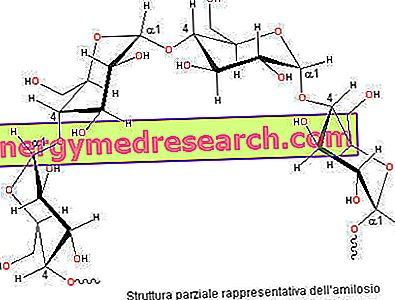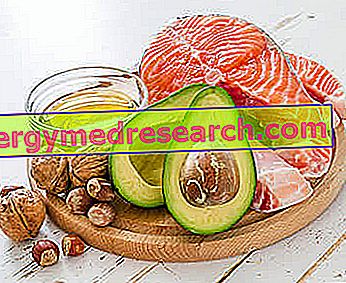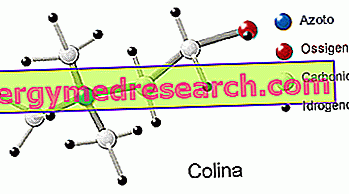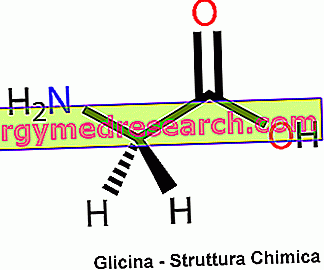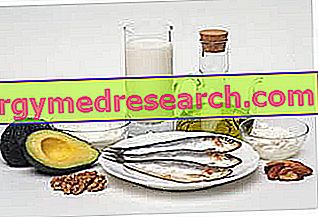What is the insulin index? The insulin index (II) is a parameter that expresses the effect of a given food on the blood levels of the hormone insulin (insulinemia) within two hours (120 '). It can be detected in all foods but, to be meaningful, the result must refer to a caloric intake of 250 kcal / 1000 kj (costate element of the evaluation scale)
Category nutrition
Proteins and Amino Acids General information on proteins Proteins are polymeric chains formed by the union of numerous amino acids, joined in sequence by bonds called peptides. In nature there are thousands of proteins, different in structure and function; this variability depends on the number, sequence and type of amino acids, and on the overall three-dimensional structure (conferred by other stabilization bonds)
Complex carbohydrates: what are they? Synonyms of "carbohydrates": sugars, carbohydrates, carbon hydrates. Complex carbohydrates are energy macronutrients and provide 3.75 calories (kcal) per gram (g); their molecular structure is polymeric, meaning that each complex carbohydrate consists of the union of more than 10 simple carbohydrates (up to several thousand)
Sugars Sugars are energy macro-nutrients that provide 3.75kcal per 100g. From the chemical point of view, other synonyms of the term "sugars" are: carbohydrates, carbohydrates and carbohydrates. In common parlance, the noun "sugar" is used to refer to a caloric sweetener based on crystallized sucrose (the so-called table sugar)
Food and omega 3 The nutritional intake of omega 3 is a determining factor for the balance of the diet and to guarantee the general state of health of the organism. Not all foods have a satisfactory content of omega 3 which, on the other hand, play an indispensable role in the body. Functions of the omega 3s Some of the biological functions of omega 3 are: constituents of cell membranes, structure the nervous and ocular tissue, precursors of anti-inflammatory eicosanoids, contrast hypertension and hypertriglyceridemia (with beneficial effects on vascular health), participate in maintaining brai
Generality Choline, or Vitamin J, is an amine, as well as an essential coenzyme for the formation of cell membranes and cholinic neurotransmitters (acetylcholine). It is an organic compound only partially synthesized by the body (thanks to the presence of cobalamin and folic acid); therefore, its contribution should be guaranteed above all through food
Hypervitaminosis and Vitamin D Hypervitaminosis is a morbid condition caused by excess vitamin, which generates intoxication of the organism. There are various types of hypervitaminosis, depending on the type of vitamin taken in excess; however, it is important to point out that not all vitamins cause intoxication and that the excess can have very different consequences between one vitamin and another
What are Vitamin-like factors are substances that behave similarly to vitamins. PABA Among vitamin-like factors, one has been the subject of particular interest by the scientific community, paramminobenzoic acid or PABA , also known as vitamin B10. It is a component of folic acid (vitamin Bc); moreover, an equally important feature, PABA acts as an antagonist against sulfonamides, drugs once used as antibiotics (but now obsolete) and which still today are used in the treatment of nocardiosis (granulomatous infection by Nocardia, saprophytic soil bacterium)
Fibers: what are they? Dietary fibers are a heterogeneous group of molecules (for example, some complex glucides or lignin) composed of glycosidic bonds that cannot be hydrolysed (broken) by the human digestive enzymes of saliva, pancreatic juices and intestinal brush rim. Although all types of dietary fiber are commonly grouped under the univocal term "fibers", the specialists have defined more accurately TWO subgroups that distinguish them based on their chemical properties and the consequent metabolic effect they cover; these are the VISCOSE fibers and the NON VISCOSE fibers
Generalities and Features Glycine (abbreviated Gly or G , brute formula NH 2 CH 2 COOH) is the smallest of the 20 ordinary amino acids (the one with the lowest molecular weight among the amino acids most present in proteins). In fact, the chemical structure of glycine is almost "reduced to the bone", since its side chain (a radical that differentiates all the amino acids) consists of a single hydrogen (H)
See also: good cholesterol and bad cholesterol Introduction The term "good fats and bad fats" is a simplistic conjecture used by nutrition professionals, physicians and athletic trainers to facilitate nutrition education for their clients / patients. In reality, food lipids are all (or almost) molecules naturally present within the human diet "from the dawn of time"

